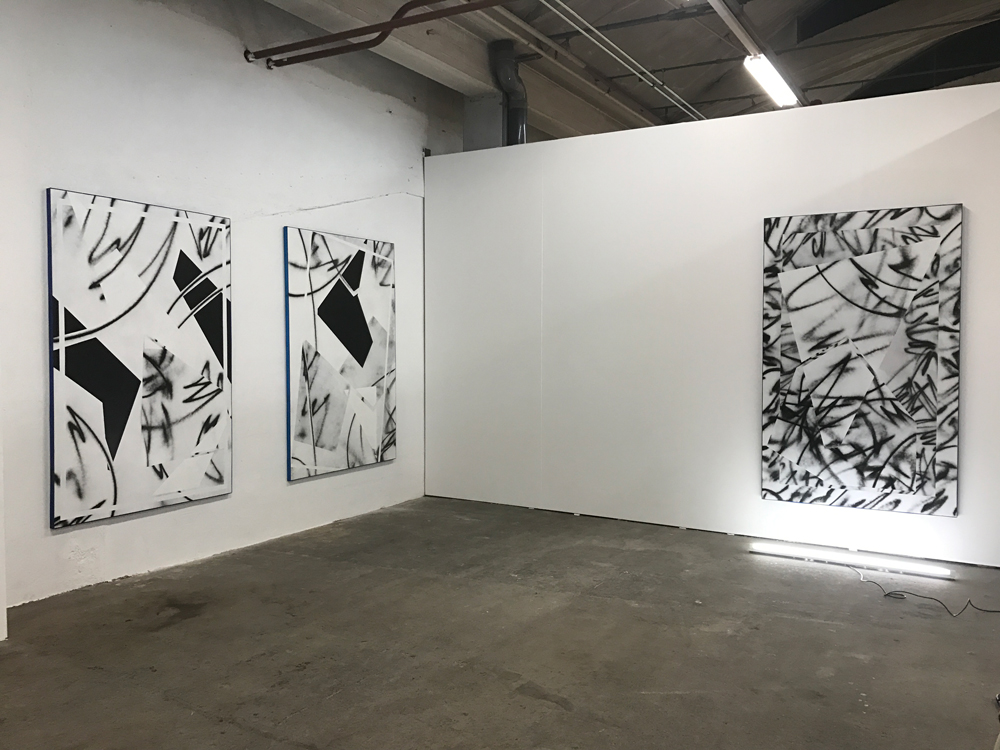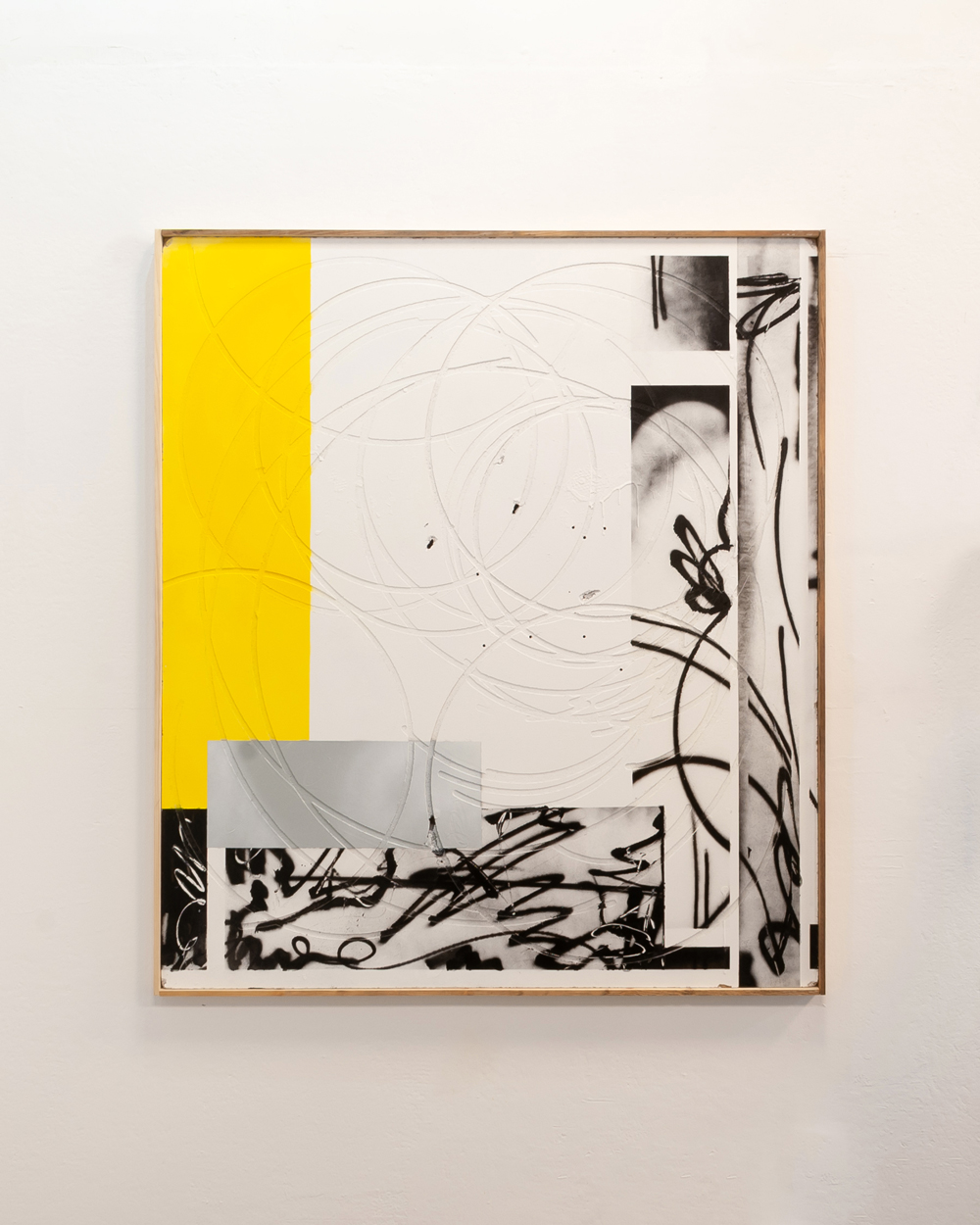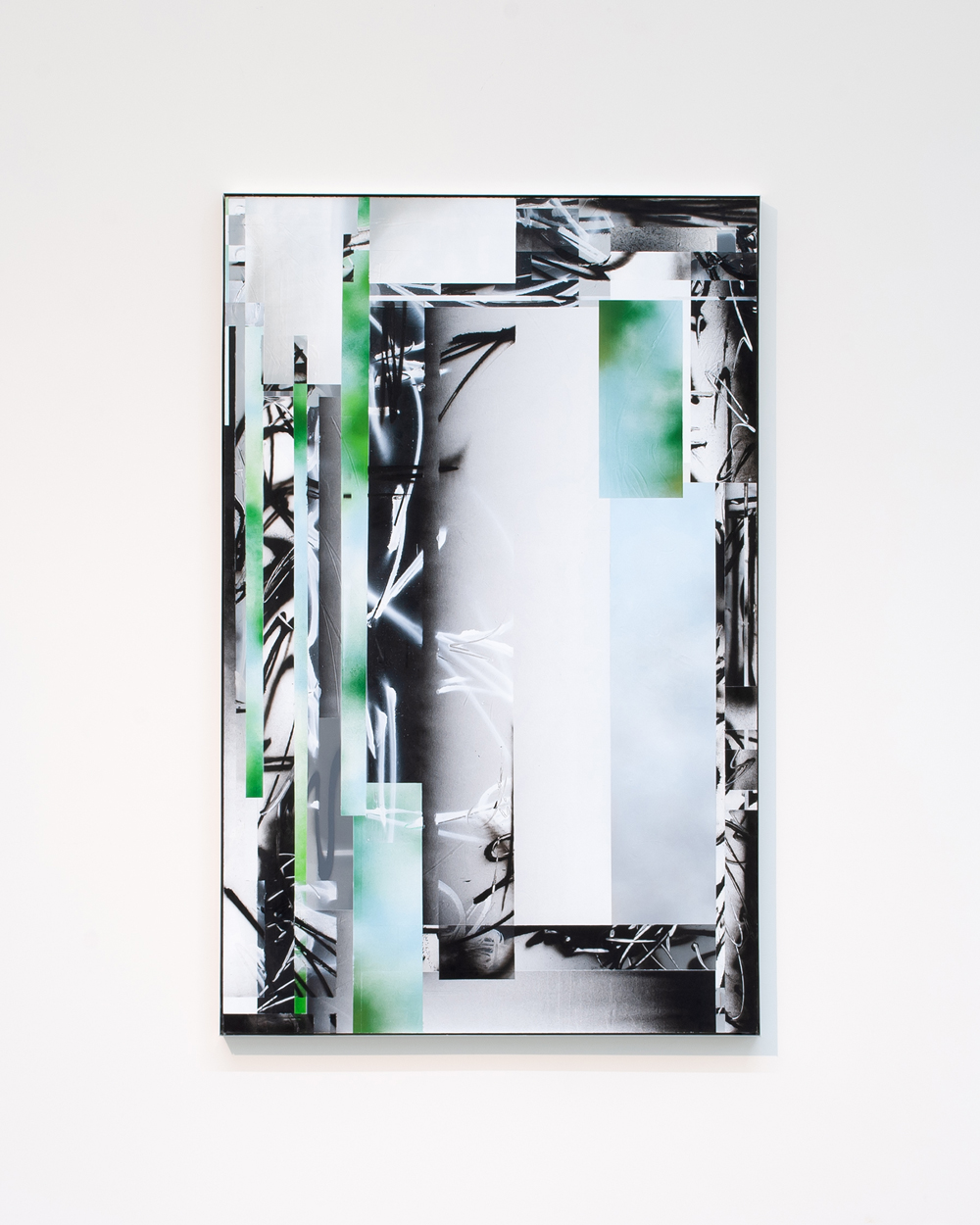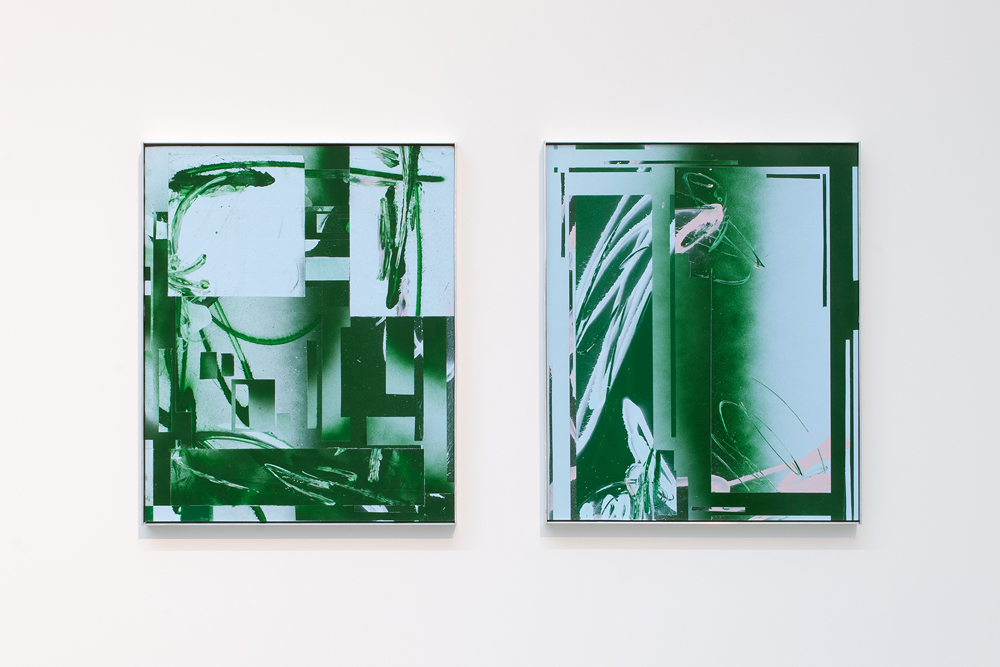13 november 2023, Wouter van den Eijkel
The studio of... Babs Bleeker
To Babs Bleeker, painting is a way to clear her mind and understand the world around her. Her work is a direct reflection of what is going on in her head – and a lot happens in that head because Bleeker is neurodivergent. You can see this in her abstract paintings, which she describes as a kind of compilation of everything she experiences and observes, an attempt to bring order to the chaos. Babs Bleeker's work is currently on display alongside that of sculptor Tom Putman in the dual exhibition Nature Distorted at HEEJSTECK# Gallery in Utrecht. What do they have in common? "We love the same colour palette and aren't afraid of kitsch."
Where is your studio and what does it look like?
My studio is in Utrecht. Since 2018, I've been part of the cultural haven known as De Nijverheid in Utrecht. The space is approximately 40m2.

Studio Babs Bleeker
Do you have any specific requirements for a studio? Do you prefer lots of natural light, ample storage, a view of greenery or perhaps friends and colleagues working nearby?
Tall ceilings are very important to me. That breathing space is very tangible for me and I truly enjoy it. I work on trestles, so the floor must be 'clear' of obstacles, ha ha. I am very picky when it comes to lighting in terms of warm/cold tones, which is why I have lots of fluorescent lights hanging from the ceiling. I always try to tidy up when I'm done. On days when I'm not painting much, I love to just tinker around here. Fix things, paint a wall, come up with good solutions to save space, that kind of things.
I read that you are neurodivergent. What does that mean and does it influence how you organise your days?
Neurodivergence means being on the spectrum. For me, it's ADD and hypersensitivity. This means I get easily overstimulated by, for example, sudden noises, bright sunlight or strong wind. This is partly due to the lack of a filter. Everything is equally important to me. I'm in a constant state of acclimatisation. I have a hard time focusing and tend to daydream a lot. There's a lot going on in my head all day long while I'm going about my daily business. When I'm in my studio working, it's a challenge to stick to a schedule. I have a different sense of time. As a freelancer, it's an awful earning model.

Babs Bleeker, Tackling my vicious circle, HEEJSTECK#
Does neurodivergence influence the topics and themes you address in your work? I ask because the titles of your works often refer to an emotional state or a fleeting natural phenomenon.
My work is a pretty direct reflection of my mind. I usually start painting because of an aesthetic inspiration. Curiosity also plays a significant role. As I progress, I recognise elements in the work and delve deeper into them. Often, these are memories of things I've seen. Painting is my way to clear my mind and by interacting with it, understand things better. Something I'm often not even aware of at the time and don’t realise until later on.
Above all, I paint to unleash energy, tension. That's what my spray-painted line drawings are all about. Abrasive, fast, intuitive and thoughtless. The combination of the rush of those tags that I then carefully place in a composition that I align entirely in hyperfocus creates, in my opinion, a strong but harmonious image. Harmony in disharmony. Order in chaos. On the other hand, if I experience a negative emotion, I don't go to my studio to 'paint it out.' It's not such a direct translation for me. My work is more like a kind of compilation of everything I experience and observe, everything I'm dealing with. In Night's Opera, for instance, it's about the allure of the night. Those paintings reflect my inner conflict. I felt very lonely at that time. I love the night so much, but why does it feel wrong to want to work at night? Why is it okay for a bartender but not an artist? Who decides that? When the canvases were finished, I realised I had put that frustration into them. In other words, this is a topic I address.
Your work is currently on display alongside Tom Putman's in the dual exhibition Nature Distorted at HEEJSTECK#. How did that collaboration come about and what is the greatest similarity between your work?
Last summer, Galerie HEEJSTECK# called me to ask if I would like to have a duo show with Tom. I didn't hesitate for a moment and responded “of course!” With Jaap, Ellemieke, Alex and Tom, it was guaranteed to be an awesome show. A real power combination. I think Tom and I share the fact that we both push the boundaries within our medium: Tom with his sculptures and I with my paintings. We also genuinely love the same colour palette and aren't afraid of kitsch.

Babs Bleeker, HEEJSTECK#
What is the work you have worked on for the longest and why?
Vertical Forest is by far the piece I've worked on the longest, not because of its size but because it let me experience patience on a different level. Unlike my usual fast-paced painting method, this work required a lot of time and focus because I painted it with spray paint mist. The paint lies 'on' the panel, so I had to be extremely careful to avoid scratches and stains. The realistic element is also a new step after years of painting abstractly. I really wanted the viewer to see what I saw in it. It felt fantastic to return to that style and it really inspired and motivated me. It was also a challenge to leave the work as it is right now.
This is something I always struggle with, by the way. “Stick to the plan,” I tell myself daily. That's why I work on several panels at the same time. As soon as I see other ideas while painting, I quickly incorporate them into a different panel. I simply have to be creating a lot of work at all times. Each piece is one step forward. (I also draw a lot on my iPad to explore impulsive ideas). This way, new paintings emerge and can develop into diptychs or triptychs or a series.
You’re still at the start of your career and have been exhibiting since 2016. It is now 2023. Where do you hope to be by 2030?
By 2030, I hope to have been a resident at the Rijksakademie. I hope to have been honoured multiple times by the Mondriaan Fund and have had numerous residencies abroad. As a homebody, that seems like the perfect challenge. I hope to have found a good and sustainable balance between work and relaxation. To be financially healthy. Personally healthy. To love and be loved by my partner. I also hope to work as a teacher at an art academy in the Netherlands. But as far as painting is concerned, an artist's career lasts until death, right?

Babs Bleeker, HEEJSTECK#
You work with mixed techniques: spray paint, oil paint and assemblages. Is there a technique or medium you would like to work with in the future?
It may sound simple, but I would really like to paint on canvas again with oils and a big flat brush after all these years. Or try sculpting again. 3D work.
If I were to give you carte blanche, what kind of project would you immediately start working on?
I never work on projects, so I would 'buy' time from your carte blanche budget for my studio. I mainly need to spend a lot of time there and create a lot of work to give every inspiration impulse opportunity and not over-paint it. A year of financial freedom in terms of rent and material costs and a small amount for fixed expenses would be perfect.
What are you currently working on?
I am currently working on new paintings for the exhibition Commentaire Compose (curated by Jean-Philippe Paumier) in Amsterdam. This involves experimenting a lot with relief/structures, but without the use of plaster. Continuing the vibe of Vertical Forest, but in a different way.

Babs Bleeker, HEEJSTECK#
